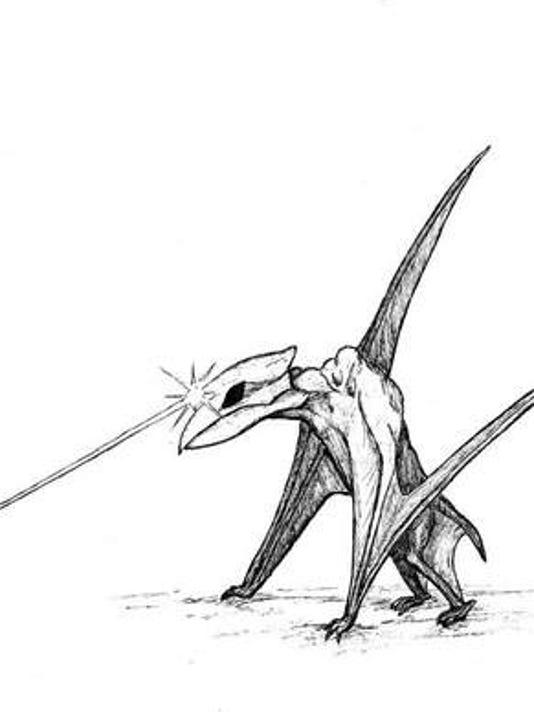
Sept/Oct 2023 (Volume 15, Issue 5)
By Michael Swanger
In this day and age when disinformation, rumor, heresy and conjecture is misconstrued and hurriedly propagated as fact on social media and tawdry television shows I am reminded of when people spun sensational yarns that were long in the tooth, but short on facts. They are what is known as folklore and urban myths, i.e., Bigfoot, Loch Ness Monster and the Fountain of Youth.
Such traditional tales preserved among a people often vary culturally, religiously and regionally. The most colorful ones are reinforced, if not exaggerated, during the annual celebration of Halloween. They tend to appeal to our natural curiosity that perhaps, just perhaps, such unsupported notions truly exist.
Iowa’s popular history includes titillating urban myths and legends that range in subject matter from unidentified creatures, to possessed works of stone, to haunting ghosts, that are unique to the Hawkeye State. Some have provided fodder for articles, books and documentaries, while others remain oral traditions.
For those who prefer to spend Halloween obsessing about the alleged powers of inanimate objects instead of handing out candy to neighborhood kids donning costumes and telling jokes, there is no shortage of haunting theories to prove or disprove.
For starters, Guthrie Center’s Union Cemetery is home to “The Devil’s Chair” where legend claims that sitting in it results in bad luck, or death.
Lest anyone believe that all angels have good intentions beware of those with the same foreboding name located in Iowa City and Council Bluffs. A simple touch or kiss of “The Black Angel” at Oakland Cemetery in Iowa City supposedly is the kiss of death. (Though the real health risk is touching the Brain Rock on the University of Iowa’s campus. Just ask any student.) And the statue by the same name at Fairview Cemetery in Council Bluffs is said to follow visitors with her eyes and is capable of “blessing” whoever touches her with sickness … presumably before she flies away at night as the legend further contends.
Of course there is no shortage of haunted houses and woods in Iowa, too. They include — most infamously — the home in Villisca where six members of the Moore family were murdered with an axe one night in 1912.
Other apparitional abodes include the Edinburgh Manor in Monticello haunted by “The Joker” and one in Clarion occupied by “George,” where according to folklore if you pick up an old photo upstairs and take it home at night and sleep with it, the photo reappears the next day where you found it and a dark figure can be seen in the photo.
Not all sites, however, are haunted by scary ghosts. In Ames, the ghost of Stephens Auditorium allegedly wanders the venue and can be seen sitting in the back corner of the third row balcony. Legend has it that he brings good luck to the performers who see him before their show. I remember sitting in the nosebleed section there in 1994 for a concert by Carlos Santana. Fortunately, there were no signs of evil ways.
In Urbandale, rumors persist of a ghost named Uncle Charlie who can can be seen running at night if you are able to capture a picture of him using your camera’s flash. Other creepy locales, reportedly, include the Farrar Schoolhouse, the Franklin Hotel in Strawberry Point, the Banwell (Terror) Bridge in Fort Dodge and the Mathias Ham House in Dubuque.

A drawing of “The Van Meter Visitor.”
One story that took off in 1903 was that of the “Van Meter Visitor,” which made headlines in the Des Moines Daily News on Oct. 3 after several prominent men in Van Meter reported seeing a half human, half animal with large bat wings flying at high speeds and shooting a blinding light from its head. In spite of residents claiming to have shot it during the course of several days, it was later spotted by a posse of armed men near an abandoned coal mine where the newspaper quoted one observer saying, “… the noise opened up again, as though Satan and a regiment of imps were coming forth for battle.” Reportedly, the beast returned the following day and disappeared into the shaft of the old mine never to be seen again.
In American Indian folklore, legends abound, including those among the Ioway. They include mythical figures such as “Sharp-Elbows,” a man-eating ogre with spiked elbows and faces on the front and back of its head; “Shunka Warak’in,” a wolf-like monster; twin monster slayers “Dore” and “Wahre’dua”; and legends of serpent monsters and Ictinike’s revenge regarding a buzzard.
These and other urban legends, myths and folklore loosely fit under the enormous umbrella of “history.” You can choose what you want to believe depending on your belief system, but keep your wits about you when sorting fact from fiction.
TO READ MORE FASCINATING STORIES ABOUT IOWA HISTORY, subscribe to Iowa History Journal. You can also purchase back issues at the store.
